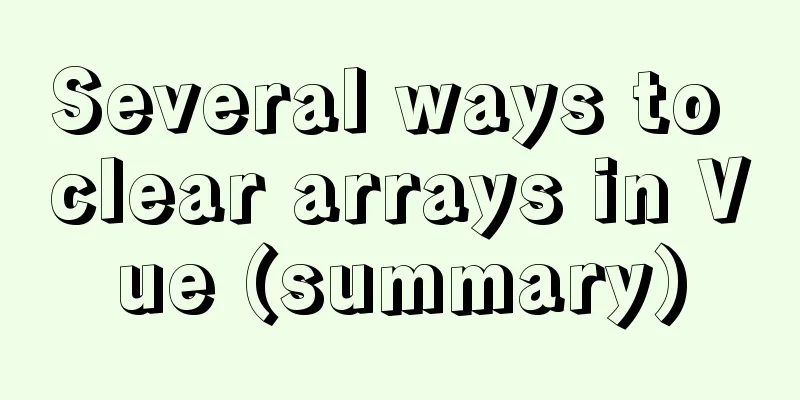Incredible CSS navigation bar underline following effect

|
The first cutter in China github.com/chokcoco First, here is a picture. How can we use pure CSS to create the following effect?
Before you continue reading, take a moment to pause. Try to think about the above effect or try it yourself, and see if you can achieve the above effect cleverly without the help of JS. OK, continue. This effect is a similar small problem I encountered during the process of business development. In fact, even if I were asked to use Javascript, my first reaction would be that it would be very troublesome. So I've been wondering, is it possible to accomplish this effect using only CSS? Defining requirements Let's define a simple rule with the following requirements: Assume the HTML structure is as follows: <ul> <li>Amazing CSS</li> <li>Navigation bar</li> <li>The cursor small underline follows</li> <li>PURE CSS</li> <li>Nav Underline</li> </ul>
Realization requirements When I first saw this effect, I felt that this following animation would be impossible to achieve with CSS alone. If you want to achieve it only with CSS, you can only find another way and use some tricky methods. OK, let's use some tricks and CSS to achieve this effect step by step. Analyze the difficulties: Width is not fixed The first difficulty is that the width of Since the width of each
li {
border-bottom: 2pxsolid#000;
} So, it may look like this now (li are connected together, and the gaps between li are created using
Of course, there are no underscores at first, so we may need to hide them.
li {
border-bottom: 0pxsolid#000;
}Start over again with pseudo elements This doesn't seem to work, because after hiding, when hovering
li::before {
content: "";
position: absolute;
top: 0;
left: 0;
width: 100%;
height: 100%;
border-bottom: 2pxsolid#000;
} Let’s consider the first step of the animation. When hovering, the underline should move and expand from one side. Therefore, we use absolute positioning to set the width of
li::before {
content: "";
position: absolute;
top: 0;
left: 0;
width: 0;
height: 100%;
border-bottom: 2pxsolid#000;
}
li:hover::before {
width: 100%;
}The following results are obtained:
OK, I feel like I’m one step closer to success. Now we have to deal with the hardest problem: How to make the line follow the movement of the cursor, so that when moving from the left Let's take a closer look at the current effect:
When switching from the first
li::before {
content: "";
position: absolute;
top: 0;
left: 100%;
width: 0;
height: 100%;
border-bottom: 2pxsolid#000;
}
li:hover::before {
left: 0;
width: 100%;
}See the effect:
Well, if you compare the two pictures carefully, the second effect is actually picking up sesame seeds and losing watermelons. The direction of the first
Therefore, we urgently need a method that can change the movement mode of the underline of the next That's right, here we can use the For the currently hovered
li::before {
content: "";
position: absolute;
top: 0;
left: 100%;
width: 0;
height: 100%;
border-bottom: 2pxsolid#000;
transition: 0.2salllinear;
}
li:hover::before {
width: 100%;
left: 0;
}
li:hover~li::before {
left: 0;
}At this point, the effect we want is achieved! Scatter flowers. have a look:
The effect is good, but a little stiff. We can achieve the effect mentioned above by changing the easing function appropriately and adding an animation delay . Of course, these are just icing on the cake. The complete DEMO can be found here: CodePen --Demo at last The biggest flaw of this method is that when entering the first li, the line can only go from right to left. Apart from this, the following effect can be achieved very well. I haven't updated for a long time. Recently, I have been obsessed with learning blockchain-related technologies, such as Ethereum programming, smart contract writing, etc. In the future, I will still focus more on my own field and write more front-end articles. The charm of CSS is still irresistible. More wonderful CSS technical articles are collected in my Github -- iCSS. They are continuously updated. Welcome to click a star to subscribe and collect. Summarize The above is the incredible CSS navigation bar underline following effect that I introduced to you. I hope it will be helpful to you. If you have any questions, please leave me a message and I will reply to you in time. I would also like to thank everyone for their support of the 123WORDPRESS.COM website! |
<<: The use of textarea in html and common problems and case analysis
>>: Creative About Us Web Page Design
Recommend
Let's talk about parameters in MySQL
Preface: In some previous articles, we often see ...
Search engine free collection of website entrances
1: Baidu website login entrance Website: http://ww...
Vue implements sample code for dragging files from desktop to web page (can display pictures/audio/video)
Effect If you use it, please optimize the code an...
CSS3 new layout: flex detailed explanation
Flex Basic Concepts Flex layout (flex is the abbr...
Summary of MySQL data migration
Table of contents Preface: 1. About data migratio...
Information transmission and function calls between WeChat mini program pages and components
In this article, I will explain the relevant cont...
Solve the mysql problem: Unable to continue code execution because MSVCR120.dll is not found
1. Problem The problems encountered when initiali...
CSS description of the implementation code for displaying text at the end of the horizontal progress bar
Problem Description I want to achieve the followi...
Flex layout realizes left text overflow and omits right text adaptation
I want to achieve a situation where the width of ...
Use CSS to easily implement some frequently appearing weird buttons
background In the group, some students will ask r...
Steps to initialize the password after the first successful installation of MySQL
Unzip the file into a directory This is the direc...
How to use CSS pseudo-elements to control the style of several consecutive elements
When using CSS pseudo-elements to control element...
CentOS 8 custom directory installation nginx (tutorial details)
1. Install tools and libraries # PCRE is a Perl l...
Detailed explanation of creating, calling and managing MySQL stored procedures
Table of contents Introduction to stored procedur...
Shtml Concise Tutorial
Shtml and asp are similar. In files named shtml, s...
















